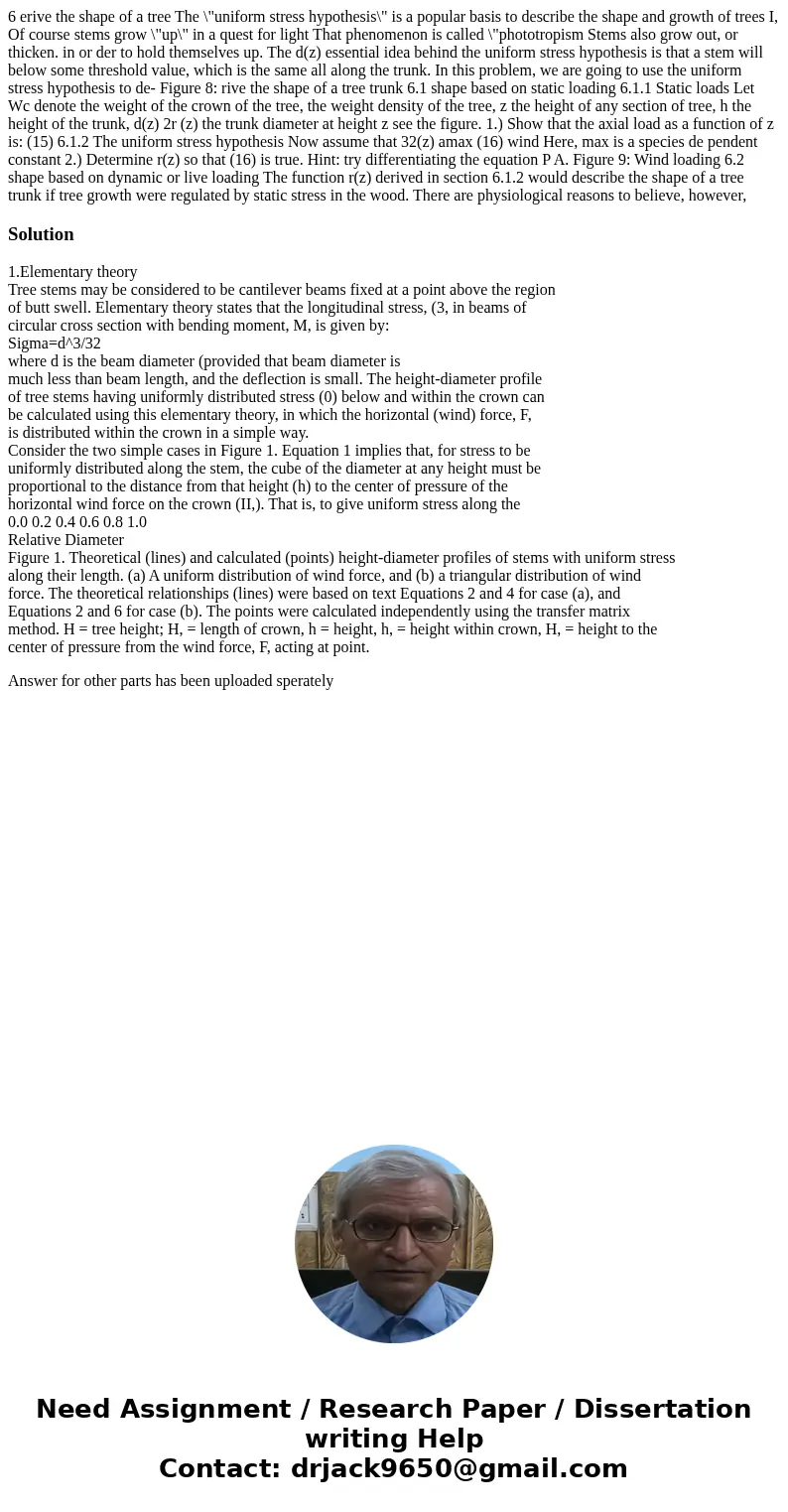6 erive the shape of a tree The uniform stress hypothesis is
Solution
1.Elementary theory
Tree stems may be considered to be cantilever beams fixed at a point above the region
of butt swell. Elementary theory states that the longitudinal stress, (3, in beams of
circular cross section with bending moment, M, is given by:
Sigma=d^3/32
where d is the beam diameter (provided that beam diameter is
much less than beam length, and the deflection is small. The height-diameter profile
of tree stems having uniformly distributed stress (0) below and within the crown can
be calculated using this elementary theory, in which the horizontal (wind) force, F,
is distributed within the crown in a simple way.
Consider the two simple cases in Figure 1. Equation 1 implies that, for stress to be
uniformly distributed along the stem, the cube of the diameter at any height must be
proportional to the distance from that height (h) to the center of pressure of the
horizontal wind force on the crown (II,). That is, to give uniform stress along the
0.0 0.2 0.4 0.6 0.8 1.0
Relative Diameter
Figure 1. Theoretical (lines) and calculated (points) height-diameter profiles of stems with uniform stress
along their length. (a) A uniform distribution of wind force, and (b) a triangular distribution of wind
force. The theoretical relationships (lines) were based on text Equations 2 and 4 for case (a), and
Equations 2 and 6 for case (b). The points were calculated independently using the transfer matrix
method. H = tree height; H, = length of crown, h = height, h, = height within crown, H, = height to the
center of pressure from the wind force, F, acting at point.
Answer for other parts has been uploaded sperately

 Homework Sourse
Homework Sourse